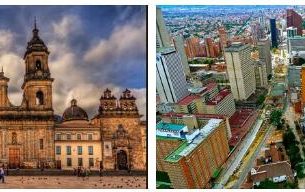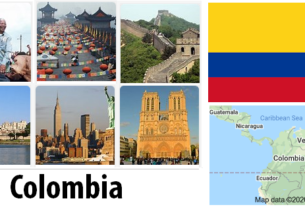ECONOMY: GENERAL INFORMATION
As a country located in South America according to programingplease, Bolivia ranks among the poorest and most backward countries in Latin America. Despite the richness of the subsoil, the economy is in fact characterized by a deficit agriculture and a very limited industry. This difficulty finds ancient justifications, and is largely due to the legacies of colonialism, which historically gave the country a territorial organization entirely centered on the high lands as they are rich in minerals and has pursued an economic policy aimed at privileging only mining (of which, however, the large foreign companies drew the maximum benefits), to the detriment of the other productive sectors; just as the loss in favor of Chile represented a serious damage to the Bolivian economy(1884), which deprived the country of any access to the sea. Over the decades, however, several reform attempts have been made to get Bolivia out of an emergency situation, starting with the capitalization of state-owned enterprises, popular participation in the management of public funds, as well as the reform of some welfare sectors. been, education system first of all. A number of diplomatic initiatives have also taken place to give liveliness to the Bolivian economy, which have made it possible to implement improvement projects, such as that of the communications network (characterized by a shortage of road and railway infrastructures for transport and exchange even within the Village). In January 1992, the agreement signed with Peru marked a first step towards the opening of Bolivia, easing its condition of isolation: this agreement, made operational in July 1993, in fact granted Bolivia, until 2091, a corridor for free transit from the city of Desaguadero to the port of Ilo, on the Peruvian Pacific coast. Other agreements, such as the one signed in January 1996, have allowed the country to also benefit from access to the Chilean port of Arica. All these projects are part of the economic integration policy implemented by Bolivia which, since October 1992, is part of the Andean Pacttogether with Colombia, Ecuador and Venezuela, countries between which a free trade zone has been established. Bolivia also signed a free trade agreement with Mexico in 1994. However, the timid signs of recovery that characterized the last part of the twentieth century continue to be countered by serious structural difficulties, such as a serious inflation process and a high external debt; at the same time, the measures undertaken to reduce the public deficit have fueled considerable internal tensions and social conflicts (such as those that occurred in 2000, as a consequence of the increase in the price of drinking water, after the privatization of the supply company). To negatively affect the development possibilities of the economy, The difficulties in updating the technologies used in the agricultural sector (from seeds to machinery to cultivation techniques), bureaucratic slowness and the distorted use of accessible capital also contribute to a large extent (a sort of short-sightedness in the management of pricing policy). However, since 2008 there have been some signs of recovery, such as the increase in GDP, which in 2009 amounted to US $ 17,627 million, accompanied by GDP growth.per capita (US $ 1,724). The reasons for these positive changes are due to the increase in the volume of exports, the cancellation of the country’s foreign debt (in 2005, thanks to the joint action of the IMF and World Bank countries) and the decrease in public debt. Even the trade balance, thanks to the nationalization of hydrocarbons, became active again (2006). Inflation, on the other hand, remains high, growing by 4.3% in 2006 and estimated at 3.5% in 2009. The production and trade of coca leaves deserves a separate study.. These activities represent, in fact, an important voice of the country’s economy, thanks to the volume of exports and the monetary income obtained from the sale of its derivatives, such as cocaine. The cultivation of the coca leaf has always characterized the production in the Andean areas, but if historically it was destined for internal consumption, starting from the 1980s the production has increased at an exponential rate, in conjunction with the explosion of world demand for cocaine and with the crisis of the Bolivian economy, heavily penalized by the collapse of the international tin market(1985). After losing their jobs, many Bolivian miners have turned into direct farmers, allocating increasing portions of their small plots of land to the cultivation of coca. To counter the criminal drift of the interests produced by such trafficking, various measures have been taken at national and international level (such as the unpopular introduction of a new agrarian law in 1996), flanked by the intensification of the government’s fight against drug trafficking.(1998). These measures were strongly opposed by large coca growers and peasant communities (in particular those in the Chaparé region, where coca represents the only form of economic sustenance) which in fact also hindered the conversion projects of the plantations started with help from the UN and the United States. These expanses, which in 2006 covered 25,400 ha, are in fact constantly increasing and today produce about 10% of the cocaine consumed in the world, whose main market remains that of the United States, followed by Europe and in particular Italy. in third place for consumption.
ECONOMY: AGRICULTURE AND LIVESTOCK
Extending over a small percentage of the territorial surface (3.5%), agriculture absorbs 33.2% of the active population and contributes to the production of national wealth for only 12.9% (2011). Despite this, the country’s production structure continues to be largely based on the agricultural sector, where traditional subsistence crops (potatoes, cereals such as corn, wheat, barley, quinoa – a kind of millet that grows considerable altitudes – and, in the yungas and eastern lowlands, cassava, rice and bananas) practiced in the Andean regions, alongside commercial, mechanized crops and oriented to the production of sugar cane, cotton, soy and, to a lesser extent, coffee, tobacco and cocoa. The area with the highest yields is the eastern foothills (Santa Cruz area), where numerous technologically advanced agricultural and livestock farms were created in the last years of the twentieth century. The forest cover covers approx. half of the national surface and extends, rich in valuable species, in the lowlands of Pando and Beni, where rubber is also obtained. § Livestock, which can count on a third of the national surface (occupied by permanent meadows and pastures), is a growing sector: on the plateau, where in the past there were only lamas, sheep are widespread, from which the Indios derive the wool they weave by hand; in the valleys there is no shortage of cattle, reared according to the demands for meat and milk from urban centers; there are also alpacas, vicuñas and chinchillas destined for export.




